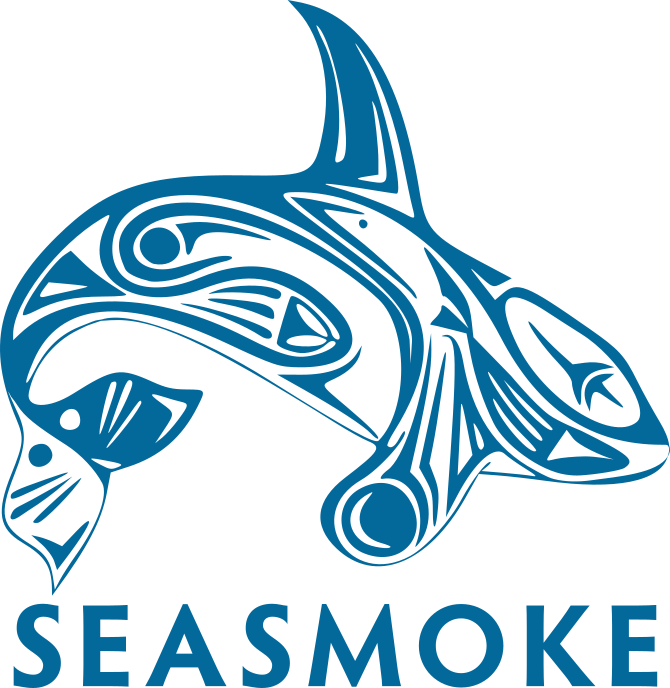An Afternoon in the Company of Humpback and Orca
60% chance of rain and 8 hours of sun was the forecast for today, which seemed very workable for a tour aboard the motor vessel Seasmoke.
We departed with the sun warming us from above and the calm seas welcoming us from below and as the tour progressed, moody grey clouds congregated and a silent, gentle mist of rain arrived. We experienced both the brilliant bright blue and the gloomy grey which changed the scenery completely.
As we ventured out into Queen Charlotte Strait in search of Orcas that had been previously sighted we relished with the clean pure air which brushed over our face and played with our hair. The subtle salt and coolness in the air was nature’s scent at its purest.
It was a treat to observe a family of Orcas that traveled east , a large male dorsal fin in the mix. We lowered the underwater microphone and not a single sound could be heard. They were silent. The whales were identified as A23 and A25 pods. If they had spoken in their unique dialect, it would have belonged to the A Clan language group. It seemed they had a destination in mind because they did not stop to forage and their cruising speed was steady.
For our guests who had never seen a Humpback, they were thrilled to watch an individual arch its back in preparation for a deep dive. It lifted its tail high enough that we could easily see the unique pattern on the underside of the fluke. This pattern distinguishes one whale from another and with this identification method, we can track where these whales travel in other times of the year. One whale slapped its tail numerous times on the flat ocean surface, perhaps stunning fish or communicating with other whales.
Red-necked Phalaropes were seen by the many today, their delicate trim bodies sitting daintily on the water, and then, as though one made the decision to lift off they all take flight at the same time and zig-zag close to the ocean surface.
The Bald Eagles poised like Xmas ornaments among the lichen that hung like tinsel from the cedar trees, and the seals and sea lions shared the space among the rocks and bull kelp. It truly is a wild world where numerous different species share this natural habitat and the rich nutrients and food it provides.









